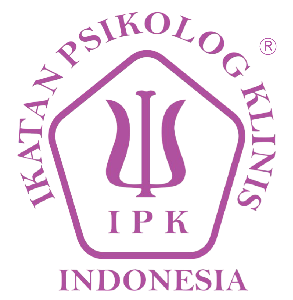Pengaruh PETTLEP Imagery terhadap Efikasi Diri Atlet Lari 100 Meter Perorangan
DOI:
https://doi.org/10.26740/jptt.v8n2.p154-164Keywords:
PETTLEP Imagery, Efikasi Diri, Atlet Lari 100 Meter PeroranganAbstract
Self-efficacy is an important mental aspect that affects the performance of athletes. High self-efficacy will enable athletes to face and handle the hard situations during the game; thus, it allows them to reach their best performances. This study was aimed to examine the effect of PETTLEP imagery on self-efficacy among athletes of 100m sprint. PETTLEP is an acronym wiich each letter represents some important factors in imagery intervention namely physic, enviroment, task, timing, learning, emotion, and perspective. This research used experimental method with one group pre-and post-test design. The participants were 6 sprinters who are selected to join PRAPELATNAS B (one of pre-national training programs for national athlete candidates)). Data were collected through a self-efficacy scale and analysed using Wilcoxon Test. The result shows that the PETTLEP Imagery intervention has an impact on the increase of the 100m sprinters self efficacy.
Key words: PETTLEP Imagery, self-efficacy, sprinters
Abstrak: Penelitian dilatabelakangi oleh pentingnya aspek mental berupa efikasi diri yang harus dimiliiki oleh atlet karena berpengaruh pada performa atlet. Salah satu treatment yang dapat dilakukan agar atlet yakin dengan kemampuannya sehingga bisa menghadapi situasi latihan dan perlombaan dengan performa yang maksimal adalah dengan melakukan PETTLEP Imagery. PETTLEP merupakan akronim dari physic (fisik), enviroment (lingkungan), task (tugas), timing (waktu), learning (belajar), emotion (emosi) dan perspective (perspektif). Penelitian ini berujuan untuk mengetahui pengaruh PETTLEP imagery terhadap efikasi diri atlet lari 100 meter perorangan. Penelitian ini menggunakan metode eksperimen dengan one group pre-and post-test design. Partisipan adalah 6 orang atlet lari 100 meter yang tergabung dalam PRAPELATNAS B (Pra-Pelatihan Nasional B). Data diperoleh dari hasil pretest dan posttest skala efikasi. Analisis data menggunakan Uji Wilcoxon. Hasil penelitian menunjukkan ada pengaruh PETTLEP Imagery terhadap peningkatan efikasi diri atlet lari 100 meter perorangan.
References
Afrouzeh, M., Sohrabi, M., Torbati, H. R. T., Gorgin, F., & Mallett, C. (2013). Effect of PETTLEP Imagery Training on Learning of New Skills in Novice Volleyball Players. Life Science Journal, 10 (1), 231-238. Diperoleh pada 24 November 2017 dari: https://www.researchgate.net/publication/286117296_Effect_of_PETTLEP_imagery_training_on_learning_of_new_skills_in_novice_volleyball_players.
Anuar, N., Jennifer, C. & Williams, S. E. (2015). Effects of Applying the PETTLEP Model on Vividness and Ease of Imaging Movement. Journal of Applied Sport Psychology, 28 (2), 1-4. DOI:10.1080/10413200.2015.1099122
Azwar, S. (2015). Penyusunan Skala Psikologi Edisi. Yogyakarta: Pustaka Pelajar
Azwar, S. (2009). Metode Penelitian. Yogyakarta: Pustaka Pelajar.
.Bandura. (1997). Self Efficacy (The Exercise Of Control). New York: W. H. Freeman and Company.
Besharat, M. & Pourbohlool, S. (2011). Moderating Effects of Self-Confidence and Sport Self-Efficacyon the Relationship between Competitive Anxietyand Sport Performance. Psychology, 2, 760-765. DOI: 10.4246/psych. 2011.27116
Bompa, T. O & Haff, G. G. (2009). Periodization: Theory and Methodology of Training. 5th Edition. Champaign, IL: Human Kinetics
Buck, D. J. M., Hutchinson, J. C., Winter, C. R.., & Thompson, B. A. (2016). The Effects Of Mental Imagery With Video-Modeling on Self Efficacy and Maximal Front Squat Ability. Sport, 4 (23), 1 10. DOI: 10.3390/sports4020023
Feltz, D. L. & Lirgg. (2001). Self Efficacy Belief of Athlete, Team, and Coaches. Handbook of Sport Psychology. New York: John Wiley & Son
Holmes, S. P. & Collins, D. J. (2001). The PETTLEP Approach To Motor Imagery: A Functional Equivalence Model For Sport Psychologists. Journal of Applied Sport Psychology. 13 (1), 60 83. DOI: 10.1080/10413200109339004
Ivancevich, J. M., Konopaske, R., & Matteso, M. T. (2008). Perilaku dan Manajemen Organisasi. Jakarta: Erlangga
Jannah, M. (2014). Model Kompetensi Psikologis Pelari Cepat 100 Meter Perorangan. Makalah disajikan dalam Pertemuan Ilmiah Ilmu Keolahragaan nasional, Penerapan Iptek dan Penguatan Ilmu Keolahragaan dalam Mendukung Prestasi Olahraga Nasional. Malang. Diperoleh pada tanggal 13 Oktober 2017 dari: http://fik.um.ac.id/wp-content/uplo ads/2014/11/09.PROCEEDINGS-PERTEMUAN-ILMIAH-ILMU-KEOLAHRAGAAN-NASIONAL-2014-MALANG.Miftakhul-Jannah.pdf
Jennifer, C. & Williams, S. E. (2012). Handbook of Sport and Performance Psychology. London: Oxford University Press
Kementerian Pemuda dan Olahraga (Kemenpora). (2017). Rencana Strategis Kementrian Pemuda Dan Olahraga Tahun 2016-2019. Jakarta. Diperoleh pada tanggal 20 Desember 2017 dari http://www. kemenpora.go.id/index/preview/data/11640
Komarudin. (2013). Psikologi Olahraga Latihan Mental Dalam Olahraga Kompetitif. Bandung: Rosdakarya.
Malisoux, L., Francaux, M., Nielson, H., & Theisen, D. (2006). Strech-Shortening Cycle Exercises: An Effective Training Paradigm To Enhance Power Output Of Human Single Muscle Fibers. Journal Applied Physiologi, 100 (3), 771-779. DOI:10.1152/japplphysiol.01027.2005
Moghe, V. & Rajender, S. (2014). Effect Of PETTLEP Imagery Technique On Air Pistol Shooting Perfomance Among College Students. International Journal of Physical Education and Sport Sciences, 7 (13), 1-3. Diperoleh pada 20 November 2017 dari: http://www. ignited.in/J/IJOPESS/I/a/4181
Moritz S.E., Feltz D.L., Fahrbach K.R., & Mack D.E. (2002). The Relation of Self Efficacy Measures to Sport Performance: A Meta-Analytic Review. Research Quarterly For Exercise And Sport, 71, 280294. DOI: 10.1080/02701367.2000.1060 890
Pengurus Besar Persatuan Atletik Seluruh Indonesia (PBPASI). (2017). National Records. Diperoleh pada tanggal 24 Desember 2017 dari: http://www.indonesiaathletics.org/index.php/records.
Quinton, M. (tanpa tahun). Imagery In Sport: Elite Athlete Examples And The PETTLEP Model. Diperoleh pada 23 September 2017 dari: http://believeperform.com/performance/imagery-in-sport-elite-athlete-examples-and-the-pettlep-model/
Quinton, M., Cumming, J., Gray, R., Geeson, J., Cooper, A., Crowley, H. & Williams, S. (2014). A PETTLEP Imagery Intervention With Young Athletes. Journal of Imagery Research in Sport and Physical Activity, 9 (1), 4759. DOI: 10.1515/jirspa-2014-0003
Ramadhanti, K. A. (2013). Pelatihan Mental Imagery dalam Meningkat-kan Self-Efficacy Atlet Taekwondo Kota Cimahi. Diperoleh pada tanggal 23 September 2017 dari: http://repository.upi.edu/3145/
Ramirez, F., Dave S, & Paul H. (2010). PETTLEP Imagery And Video-Observation: A Motivation Case Study Of Four Badminton Players. Journal Sport Tourism, 17, 239 244. Diperoleh pada 20 April 2017 dari: https://www.researchgate.net/publication/236000368_Polish_Journal_of_Sports_Tourism
Safitri, D. P., & Masykur, A. M. (2017). Hubungan Efikasi Diridengan Kecemasan Menghadapi Kejuaraan Nasional Pada Atlet Tenis Lapangan Pelti Semarang. Jurnal Empati, 6 (2), 98-105. Diperoleh pada 20 November 2017 dari: https://media.neliti.com/media/publications/177918-ID-hubungan-efikasi-diri-dengan-kecemasan-m.pdf
Smith, D., Caroline J. W. & Cantwell, C. (2008). The Effect Of PETTLEP Imagery On Golf Bunker Shot Performance. Research Quarterly For Exercise And Sport, 79 (3), 385-391. DOI: 10.1080/02701367.2008.10599502
Undang-Undang Republik Indonesia Nomor 3 Tahun 2005 tentang Sistem Keolahragaan Nasional. Diperoleh pada 20 April 2017 dari: http://www.dpr.go.id/dokjdih/document/uu/45.pd
Wakefield, C. & Smith, D. (2012). Perfecting Practice: Applying the PETTLEP Model of Motor Imagery. Journal of Sport Psychology in Action, 3, 111. DOI: 10.1080/21520704.2011.639853
Zagórska A. & M. Guskowszka. (2014). A Program To Support Self Efficacy Among Athletes. Journal of Medicine Science Sports. 24, 121-128. DOI: 10.1111/sms.12125
Downloads
Published
How to Cite
Issue
Section
License
Authors who publish in this journal agree to the following terms:
Copyright in any article is held by the author.
The author grants the journal, publication rights with the work simultaneously licensed under a Creative Commons Attribution License that allows others to share the work with an acknowledgment of the work's authorship and initial publication in this journal.
Authors may enter into separate, additional contractual arrangements for the non-exclusive distribution of the journal's published version of the work (e.g., posting it to an institutional repository or publishing it in a book), with an acknowledgment of its initial publication in this journal.
Authors are permitted and encouraged to post their work online (e.g., in an institutional repository or on their website) prior to and during the submission process, as this can lead to productive exchanges, as well as earlier and greater citation of published work.
 Abstract views: 1142
,
Abstract views: 1142
, PDF Downloads: 1008
PDF Downloads: 1008

















